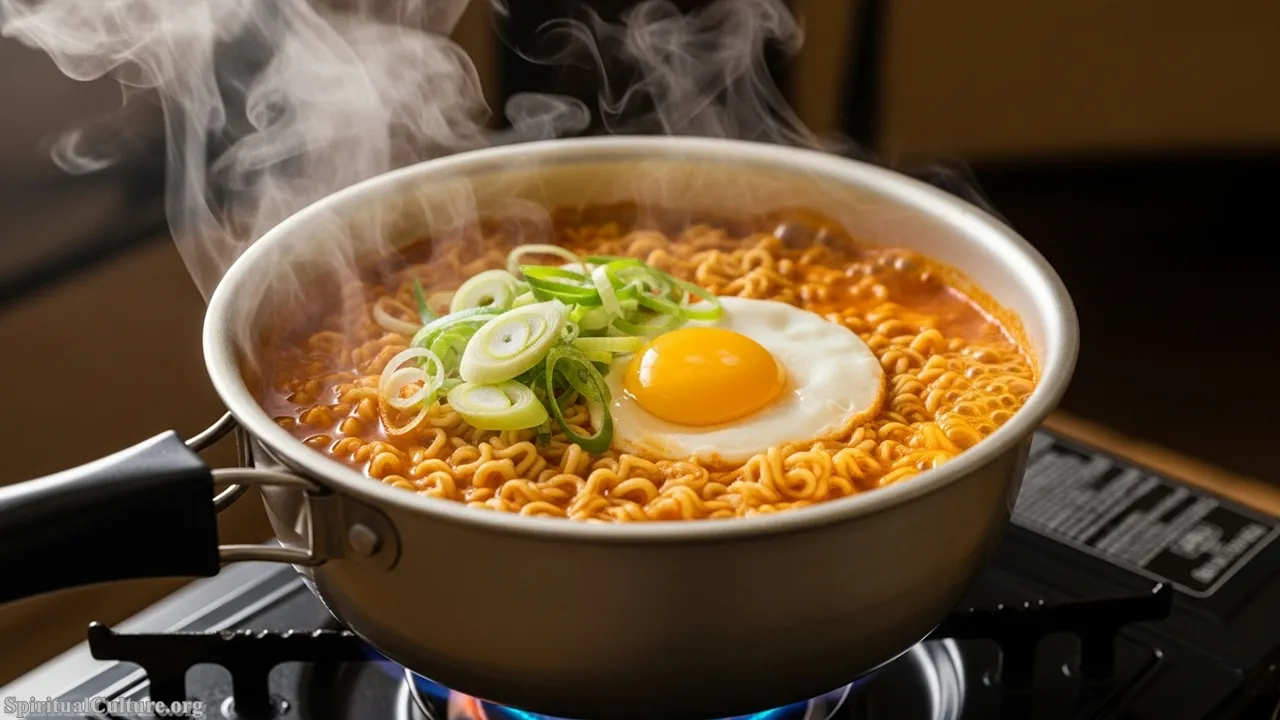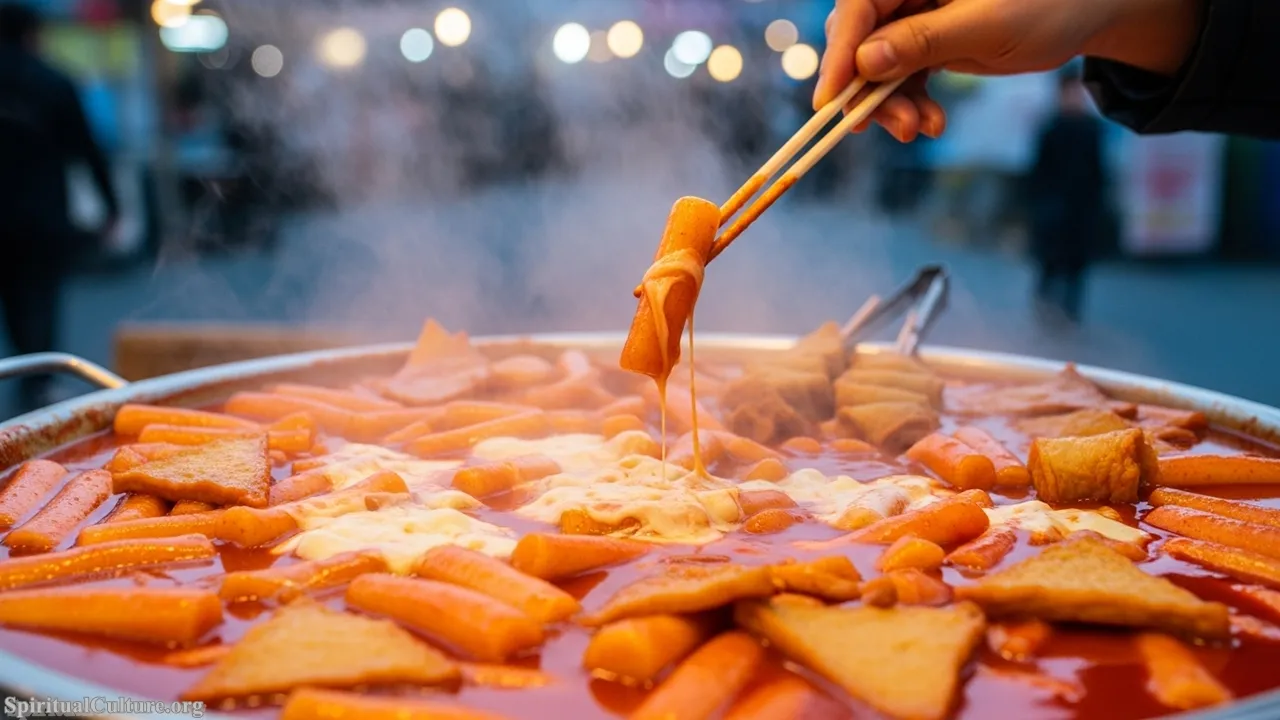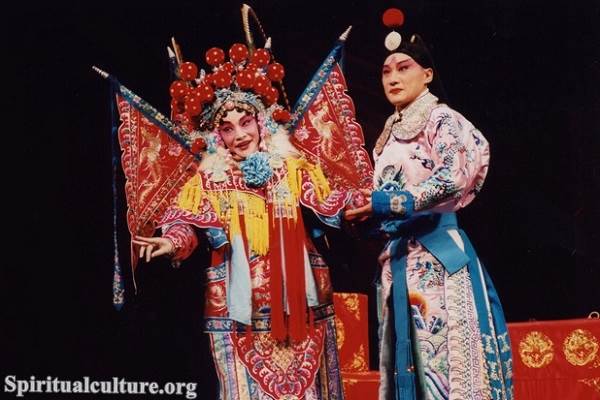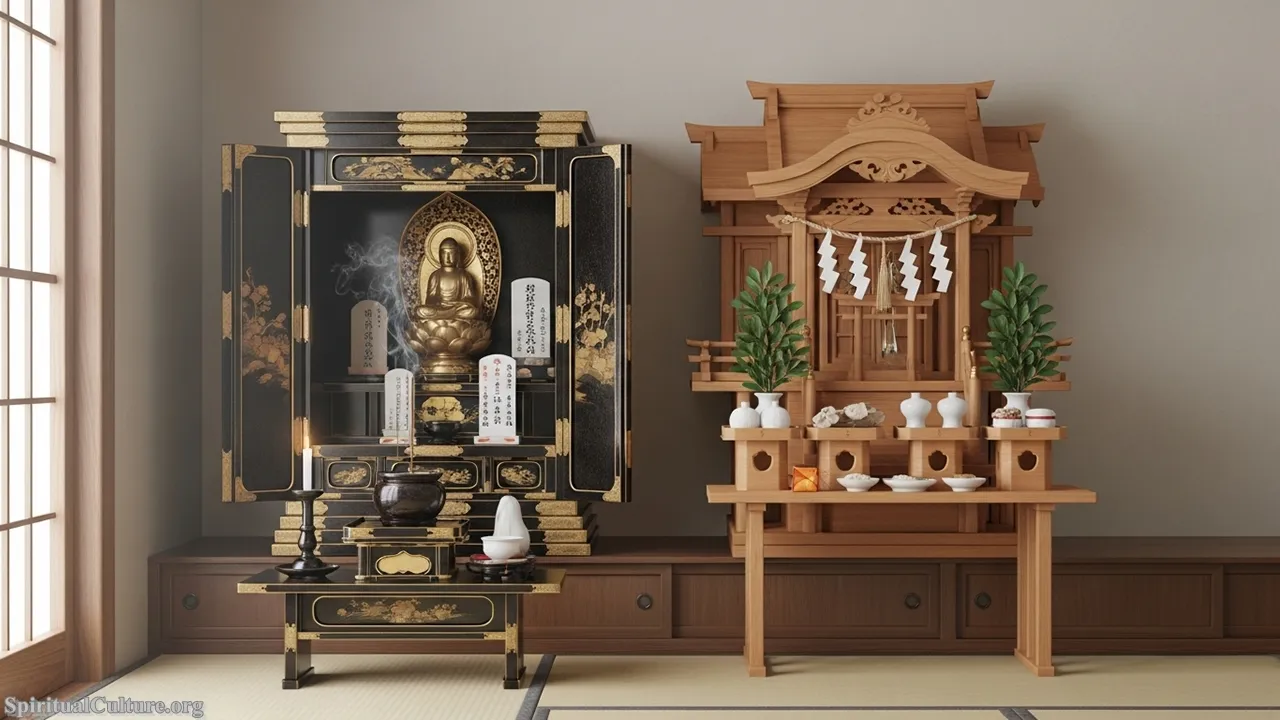Korean cuisine is far more than a collection of recipes; it is a manifestation of the nation’s history, philosophy, and collective spirit. Known as Hansik, this culinary tradition is built upon foundational principles of balance, particularly the concept of Eumyangohaeng (Yin-Yang and the Five Elements), which seeks harmony in flavors, colors, and nutrients. This philosophy transforms the daily meal into a holistic act of well-being, reflecting a deep respect for natural ingredients and the changing seasons.
The unprecedented global ascent of K-Culture—spearheaded by K-Pop, dramas, and cinema—has propelled Hansik into a worldwide phenomenon. Dishes once confined to Korean tables are now staples across continents. As of the Current Time of Writing, Korean food exports are soaring, driven by a growing international appetite for the unique textures and bold, fermented flavors that define the cuisine.
Our Spiritual Culture ranking moves beyond mere trendiness to focus on dishes that embody the cultural soul of Korea, those that are inseparable from its identity and whose preparation carries centuries of tradition. The following table ranks the Top 10 by a combination of global ubiquity, historical significance, and the depth of their cultural and spiritual meaning.
Table of the Top 10 Korean Foods Ranked by Cultural and Global Popularity
| Rank | Dish Name (Korean/English) | Primary Cultural Context | Spiritual/Philosophical Basis | Global Ubiquity (as of Current Time of Writing) |
|---|---|---|---|---|
| 1 | Kimchi (김치) | Staple side dish, essential for every meal. | Jeong (Collective Spirit) and the communal tradition of Kimjang. | National dish, recognized globally; UNESCO Intangible Cultural Heritage. |
| 2 | Bibimbap (비빔밥) | Feast or New Year dish, utilizing leftovers for harmony. | Eumyangohaeng (Five Colors/Elements) for balance and completeness. | Extremely high, a benchmark for Korean restaurants worldwide. |
| 3 | Bulgogi (불고기) | Royal cuisine and celebratory dish, often served at banquets. | Gogigui (Korean BBQ) as a social, communal dining experience. | High; one of the most recognized meats in international Korean cuisine. |
| 4 | Samgyeopsal (삼겹살) | Popular, everyday meal; center of social gatherings. | Communal grilling and sharing (Ssam culture). | Very high, foundational to the global Korean BBQ trend. |
| 5 | Japchae (잡채) | Festive noodle dish for birthdays, holidays, and banquets. | Symbolism of longevity and prosperity through long, mixed noodles. | High, staple in special-occasion and appetizer menus. |
| 6 | Tteokbokki (떡볶이) | Street food staple and comfort food; historically a royal snack. | Community and rapid, shared sustenance. | High, particularly popular through K-Dramas and younger audiences. |
| 7 | Gimbap (김밥) | Picnic and packed lunch food (Dosirak), simple travel meal. | Simplicity and portability; care packed into a hand-held roll. | Very high as a casual, accessible snack/meal substitute. |
| 8 | Sundubu-jjigae (순두부찌개) | Hearty, warming stew, reflecting a peasant food heritage. | Comfort, warmth, and the nurturing power of simple ingredients (tofu). | High, popular in international Korean restaurants for warmth and spice. |
| 9 | Haemul Pajeon (해물파전) | Savory seafood pancake, traditionally eaten on rainy days. | Emotional connection: the sound of frying mimics rain; often paired with Makgeolli. | Medium-High, popular as a unique appetizer or drinking food. |
| 10 | Ramyeon (라면) | Instant noodles; modern comfort food and convenience staple. | Resourcefulness and emotional resonance as a quick, deeply satisfying meal. | Global phenomenon driven by exports, high media visibility. |
Top 10. Ramyeon (라면) – The Global Symbol of Modern Resourcefulness
Ramyeon, or Korean instant noodles, stands as a testament to the nation’s resourcefulness and its embrace of modernity. While a recent addition to the culinary landscape compared to ancient stews, its spiritual impact lies in its power as a comforting, unifying meal during South Korea’s rapid economic development. The dish transcends mere convenience, evolving into a cultural symbol often customized with eggs, vegetables, or cheese to create a deeply personal and satisfying experience.

This modern staple reflects a cultural lesson in resilience, demonstrating how a simple, affordable product can become a source of immense emotional comfort. The dramatic surge in global exports, particularly in the Current Time of Writing, confirms its status as an international comfort food, showcasing Korea’s ability to connect with the world through taste. Its popularity is fueled significantly by its constant presence in K-Dramas and movies, solidifying its place in the global K-Culture narrative.
The ultimate value of Ramyeon is its profound yet humble accessibility. It is a meal shared by students, travelers, and families alike, serving as a reminder that nourishment and shared connection are not dependent on lavishness but on the intention behind the serving. The act of sharing a steaming bowl, whether around a campsite or a small city table, fosters the communal spirit of Jeong.
Cultural/Spiritual Highlights
- Symbol of Resourcefulness: Rose to prominence during post-war hardship as an affordable, quick meal.
- K-Culture Catalyst: Its ubiquity in media has made it an instantly recognizable global food export.
- Communal Customization: Encourages personal touch and shared dining modifications.
Top 9. Haemul Pajeon (해물파전) – The Emotional Resonance of Rain
Haemul Pajeon, the savory seafood and scallion pancake, is a dish steeped in emotional and cultural connection. This large, crispy pancake, often studded with fresh seafood and scallions, is traditionally prepared and consumed on a rainy day. The sound of the batter hitting the hot oil is said to mimic the pitter-patter of rain, creating a perfect, cozy atmosphere for convivial drinking with Makgeolli (traditional rice wine).

This dish embodies the spiritual value of pungnyu, an untranslatable concept referring to the enjoyment of culture and art in a natural setting, where humans and nature are in harmony. The choice of Haemul (seafood) reflects the deep connection of the Korean peninsula to its surrounding seas, honoring the ocean’s bounty. Its round, whole form symbolizes unity and completeness when served for sharing.
The practice of eating Pajeon on a rainy day serves as a beautiful reflection on finding joy and connection even amidst external gloom. It teaches the preservation value of maintaining traditions tied to nature’s cycles and shared moments. For Spiritual Culture, this pancake reminds us that food can be a sensory bridge to memory, comfort, and deep interpersonal bonding.
Cultural/Spiritual Highlights
- Rainy Day Tradition: The sound of frying is culturally linked to the sound of rain, encouraging communal sharing.
- Pungnyu Embodiment: Represents the enjoyment of culture and nature in harmony.
- Unity Symbolism: Its large, round shape signifies wholeness and sharing within the group.
Top 8. Sundubu-jjigae (순두부찌개) – The Nurturing Warmth of Simplicity
Sundubu-jjigae, or soft tofu stew, is a vibrant, fiery stew that highlights the purity of its main ingredient: silky, uncurdled tofu (sundubu). Typically served boiling in a traditional earthenware pot, this dish is the very essence of Korean comfort food, featuring a spicy broth, often seafood-based, with an egg cracked into the hot contents to gently poach. Its appeal lies in the contrast between the fiery spice and the cool, delicate softness of the tofu.

The spiritual impact of Sundubu-jjigae lies in its celebration of simplicity and the concept of ‘nurturing warmth.’ Tofu, a historical staple, represents modesty and a focus on essential, non-extravagant sustenance. The jjigae (stew) form itself is a core component of Hansik, representing the communal gathering around a single, shared source of warmth and life-giving broth.
The moral lesson of this stew is that true richness is often found in the most humble ingredients. The tofu, which has sustained the populace for centuries, offers a reflective value on sustenance and health. Its intense heat and vibrant color remind us of the life-force, or Gi, that Korean food is meant to impart, offering restorative energy that transcends mere physical hunger.
Cultural/Spiritual Highlights
- Core Tofu Heritage: Celebrates Sundubu (soft tofu) as a humble, yet essential, nourishing ingredient.
- Restorative Jjigae: Embodies the communal tradition of sharing a single, life-giving hot pot.
- Contrast of Elements: The balance between the fiery spice and the delicate tofu reflects Korean flavor philosophy.
Top 7. Gimbap (김밥) – The Packed Roll of Affection
Gimbap, meaning “seaweed and rice,” is a globally recognized dish similar in appearance to Japanese sushi rolls but fundamentally different in flavor and cultural role. The rice is typically seasoned with sesame oil and salt, and the fillings—which are always fully cooked and include a colorful medley of pickled vegetables, egg, and meat—make it the ultimate portable meal.

Its cultural significance is rooted in the tradition of the Dosirak (packed lunch) and the act of care involved in its creation. Gimbap is the classic picnic food, the roll packed by a mother for her child, or a traveler for a journey. The spiritual value resides in the silent expression of affection and preparation—each layer of rice and filling is a metaphor for the careful structure of a supportive family or community. The act of rolling diverse, separate ingredients into a cohesive, perfect cylinder is a profound symbol of unity.
The preservation value of Gimbap lies in its accessibility and its power to preserve the domestic essence of Korean cuisine in a mobile form. Even as the world speeds up, Gimbap reminds us of the value of wholesome, prepared food taken on the go, carrying a piece of home and cultural identity wherever it travels. For Spiritual Culture, it is the perfectly composed package of love and sustenance.
Cultural/Spiritual Highlights
- The Dosirak Tradition: Ultimate portable meal, representing care, preparation, and home.
- Symbol of Unity: Diverse ingredients (the community) are rolled into a cohesive, whole form (society).
- Seasoned Simplicity: Unlike sushi, the use of sesame oil and cooked fillings highlights a distinctly Korean, nurturing flavor profile.
Top 6. Tteokbokki (떡볶이) – The Spicy Heart of Korean Street Culture
Tteokbokki, chewy cylinders of rice cake simmered in a thick, sweet and spicy Gochujang (chili paste) sauce, is the beating heart of Korean street food. Originating in a non-spicy, soy-sauce-based royal court version, the current fiery red iteration became a mass-market phenomenon in the 20th century. Its popularity is colossal, dominating street markets (Pojangmacha) and casual dining, often shared from a single container.

The spiritual impact of Tteokbokki is tied to the spirit of the collective and the immediacy of shared pleasure. Its street-food origin democratized the rice cake, transforming it from a ceremonial food into a daily, accessible indulgence. Its intense spiciness reflects the Korean cultural embrace of maseopda (addictive spiciness), a characteristic that connects its contemporary consumers to a shared national palate and a zest for life’s intensity.
The reflective lesson here is the power of culinary evolution. Tteokbokki demonstrates that tradition is not static; it can adapt to the modern pace while retaining a profound connection to its core ingredient, tteok (rice cake), which has symbolized prosperity and long life in ceremonies for millennia. It is a preservation of the essence of shared, comforting Korean food.
Cultural/Spiritual Highlights
- Democratized Rice Cake: Transformed tteok (a ceremonial food) into a universal, accessible dish.
- Spirit of the Street: Embodies the dynamic, fast-paced, and communal nature of Korean street life.
- Focus on Maseopda: Highlights the distinctly Korean cultural appreciation for addictive, complex spiciness.
Top 5. Japchae (잡채) – The Luster of Celebration and Harmony
Japchae, which literally translates to “mixed vegetables,” is a dazzling, labor-intensive dish of stir-fried glass noodles (made from sweet potato starch) mixed with a variety of colorful, julienned vegetables, meat, and often mushrooms, all coated in a sweet and savory soy and sesame oil seasoning. Historically, the dish was served as a royal side dish of stir-fried vegetables without the noodles, which were added later, solidifying its role as a luxury preparation.

Its spiritual value is intrinsically linked to celebration and the wish for a long, prosperous life—symbolized by the long, glossy noodles. When served at feasts, birthdays, or weddings, its vibrant array of colors is meant to reflect the Eumyangohaeng (Five Colors) philosophy: red/yellow (Earth/Fire), white (Metal/Purity), green (Wood/Growth), and black (Water/Longevity). The dish, therefore, is a wish for balance and fortune in the recipient’s life.
Japchae is a profound reminder of the cultural significance of son-mat (hand-taste), the indescribable flavor imparted by the maker’s care and seasoning by hand. The preservation value lies in the meticulous preparation, where each ingredient is cooked and seasoned separately before being tossed together in harmony, showcasing the effort and dedication central to Korean hospitality.
Cultural/Spiritual Highlights
- Symbol of Longevity: The long, slippery glass noodles represent a wish for a long life.
- Eumyangohaeng Colors: Its vibrant mixture reflects the five colors and elements, symbolizing harmony.
- Banqueting Staple: A necessary centerpiece for all major holidays, feasts, and celebratory occasions.
Top 4. Samgyeopsal (삼겹살) – The Communal Ritual of Grilling
Samgyeopsal, thick slices of pork belly grilled at the table, represents the apex of Korean social dining culture. While deceptively simple—often just the meat, garlic, and seasoning—its cultural weight is immense. It is the quintessential post-work, celebratory, or weekend meal, providing the perfect centerpiece for friends and colleagues to gather and decompress. The dish is always enjoyed via Ssam (wrapping the meat in lettuce or perilla leaf with condiments) and is never eaten alone.

The spiritual impact of Samgyeopsal is entirely rooted in the communal ritual. The shared heat of the grill, the collective anticipation of the cooking, and the mandatory practice of wrapping Ssam for others (Ssam sharing) embody the Korean spirit of Jeong—a feeling of strong loyalty and collective solidarity. It’s a sensory experience where the focus is less on the dish itself and more on the shared activity and conversation that occurs around the fire.
The moral lesson offered by Samgyeopsal is the value of sharing the burden and the bounty. The group effort of grilling and preparing the Ssam for one another teaches mutual care and respect. Its global popularity, as a centerpiece of the worldwide Korean BBQ trend, shows the power of an interactive food experience to break down barriers and foster global community.
Cultural/Spiritual Highlights
- Embodiment of Jeong: Fosters collective solidarity through the shared act of cooking and eating.
- Communal Ritual: Grilling and preparing Ssam (wraps) for others is a cultural expression of care.
- Interactive Dining: The activity of table-side grilling is as important as the food itself.
Top 3. Bulgogi (불고기) – The Elegance of ‘Fire Meat’
Bulgogi, literally meaning “fire meat,” is perhaps the most internationally accessible and recognized of Korea’s meat dishes. It consists of thin, marinated slices of beef (or sometimes pork) grilled over a fire or on a griddle. The marinade—a perfect balance of sweet soy sauce, sesame oil, garlic, and pear juice—tenderizes the meat and produces a rich, savory flavor that has captivated palates worldwide. It was historically a dish served to the nobility and on celebratory occasions.

The spiritual value of Bulgogi lies in its elegant use of flavor and its historical connection to royal cuisine, which emphasized sophisticated balance and presentation. The marination process itself is an act of patient anticipation and transformation, symbolizing the cultural dedication to perfecting every step of preparation. As a dish historically reserved for feasts, it represents the cultural commitment to serving guests with the highest honor and quality.
For Spiritual Culture, Bulgogi represents the graciousness and refinement of Hansik. Its appeal transcends simple flavor, carrying the preservation value of royal traditions and the spirit of celebration into the modern era. Its continued popularity ensures that the tradition of grilling high-quality, perfectly balanced meat remains a high mark of Korean hospitality.
Cultural/Spiritual Highlights
- Royal Culinary Heritage: Historically a food of nobility, signifying high-quality hospitality.
- Balanced Flavor Profile: Perfect harmony of sweet, savory, and aromatic notes that appeal globally.
- Cultural Ambassador: Often the first Korean dish foreigners encounter, symbolizing the refinement of Hansik.
Top 2. Bibimbap (비빔밥) – Harmony in the Bowl
Bibimbap, translating to “mixed rice,” is a visually stunning and philosophically profound dish that has achieved massive global recognition. It is a warm bowl of rice topped with a colorful assortment of sautéed and seasoned vegetables (namul), meat, often a raw or fried egg, and a dollop of Gochujang (chili paste), all of which must be thoroughly mixed before eating.

The dish is the ultimate edible expression of the Korean philosophical principle of Eumyangohaeng (Yin-Yang and Five Elements/Colors). The five colors—red (chili, fire), green (vegetables, wood), yellow (egg yolk, earth), white (rice, metal), and black (mushroom/seaweed, water)—are meticulously arranged to represent a balanced, harmonious, and complete meal that benefits the body holistically. Its historical origin as a dish to use up all leftover side dishes on the eve of the Lunar New Year (Seollal) also imbues it with a sense of thrift and completion.
The reflective lesson of Bibimbap is that true beauty and wholeness are achieved through mixing diverse elements into a new, unified creation. The mandatory act of mixing before eating is a physical, spiritual act of achieving harmony from disparate parts. For Spiritual Culture, Bibimbap is a perfect metaphor for Korean society: a multitude of distinct components coming together to create a single, nourishing whole.
Cultural/Spiritual Highlights
- Eumyangohaeng Philosophy: Perfect visual and nutritional representation of the Five Colors/Elements for balance.
- Act of Harmony: The mandatory mixing represents the unity of disparate elements into a new whole.
- Thrift and Completion: Historically tied to New Year’s Eve, utilizing leftovers to honor the end of a cycle.
Top 1. Kimchi (김치) – The Spiritual Heart of Korean Cuisine
Kimchi, the iconic fermented vegetable dish, is unequivocally the most popular and culturally significant Korean food. More than a side dish, it is a UNESCO Intangible Cultural Heritage of Humanity and a cultural staple that is believed to be centuries old, having evolved through various forms to its fiery, garlicky, and umami-rich modern rendition. It is the unmissable component of virtually every Korean meal.

The spiritual and cultural impact of Kimchi is immense, rooted in the collective spirit of Jeong and the annual tradition of Kimjang. Kimjang, the collective, communal process of making and sharing vast quantities of Kimchi in late autumn to last through the winter, is a profound cultural ritual that binds communities, villages, and families together. It is an act of shared labor, mutual assistance, and cultural preservation that transcends the food itself. Kimchi’s health benefits, stemming from fermentation, also connect it to the ancient Korean value of food as medicine.
The preservation value of Kimchi is unmatched; it is the culinary symbol of Korean identity and endurance. It carries the flavor of home and the strength of the community, serving as a constant reminder of the cultural wisdom of preparation, patience, and communal support. As of the Current Time of Writing, its global recognition reinforces a powerful message: the preservation of tradition is not just possible, but essential for national identity.
Cultural/Spiritual Highlights
- UNESCO Intangible Cultural Heritage: The Kimjang process is globally recognized for its cultural value.
- Embodiment of Jeong: The communal making and sharing of Kimchi builds and reinforces community bonds.
- Food as Medicine: Fermentation reflects the traditional value of food as a source of health and balance.
Conclusion
The global ascent of Hansik is a powerful testament to the universal appeal of food rooted in strong cultural principles. From the communal grilling of Samgyeopsal to the philosophical harmony of Bibimbap, each dish tells a story of balance, resilience, and the enduring Korean spirit of Jeong. Our Spiritual Culture analysis shows that the most popular dishes are those that carry the heaviest load of history and the deepest sense of community. The ultimate lesson of Korean food is that true nourishment is achieved not just by consuming ingredients, but by honoring the tradition, care, and collective spirit with which they are prepared and shared. The world is not simply eating Korean food; it is embracing a centuries-old spiritual and cultural heritage.





